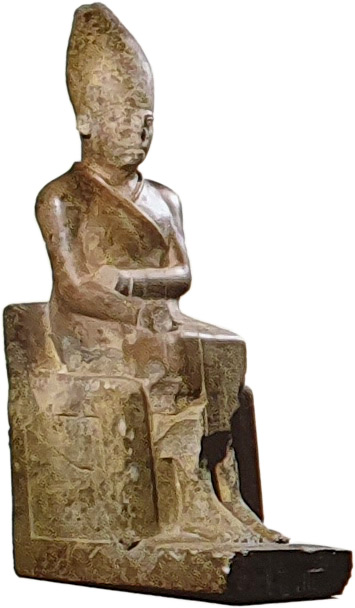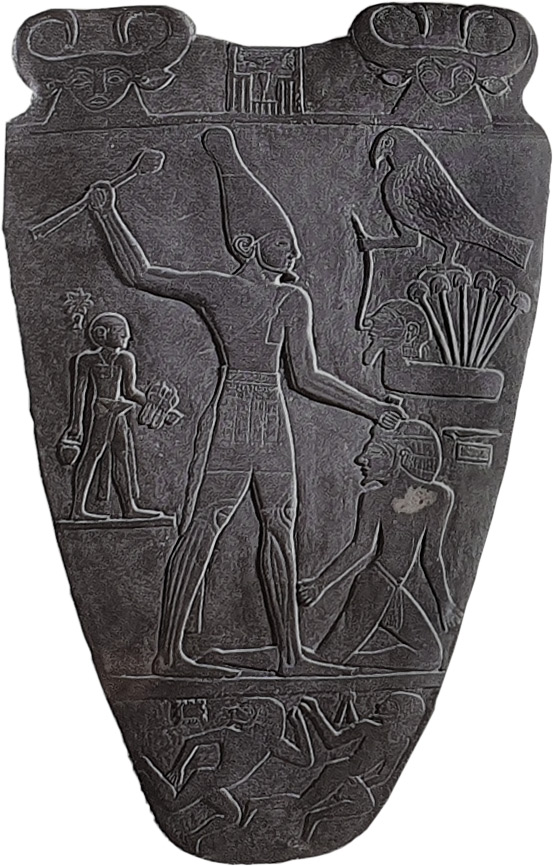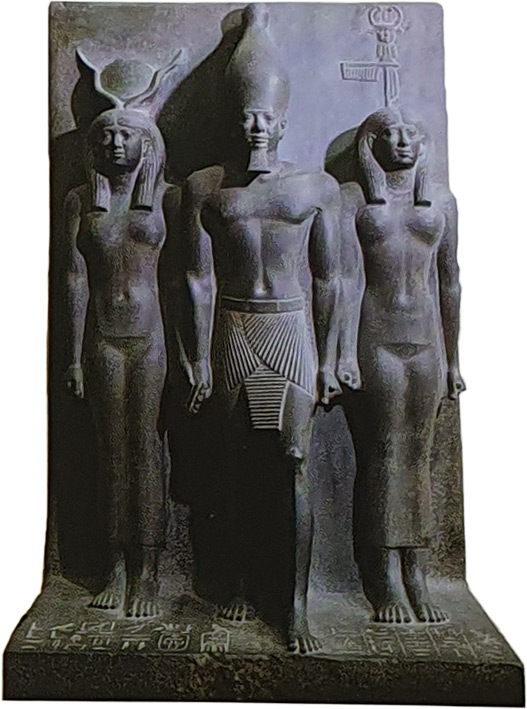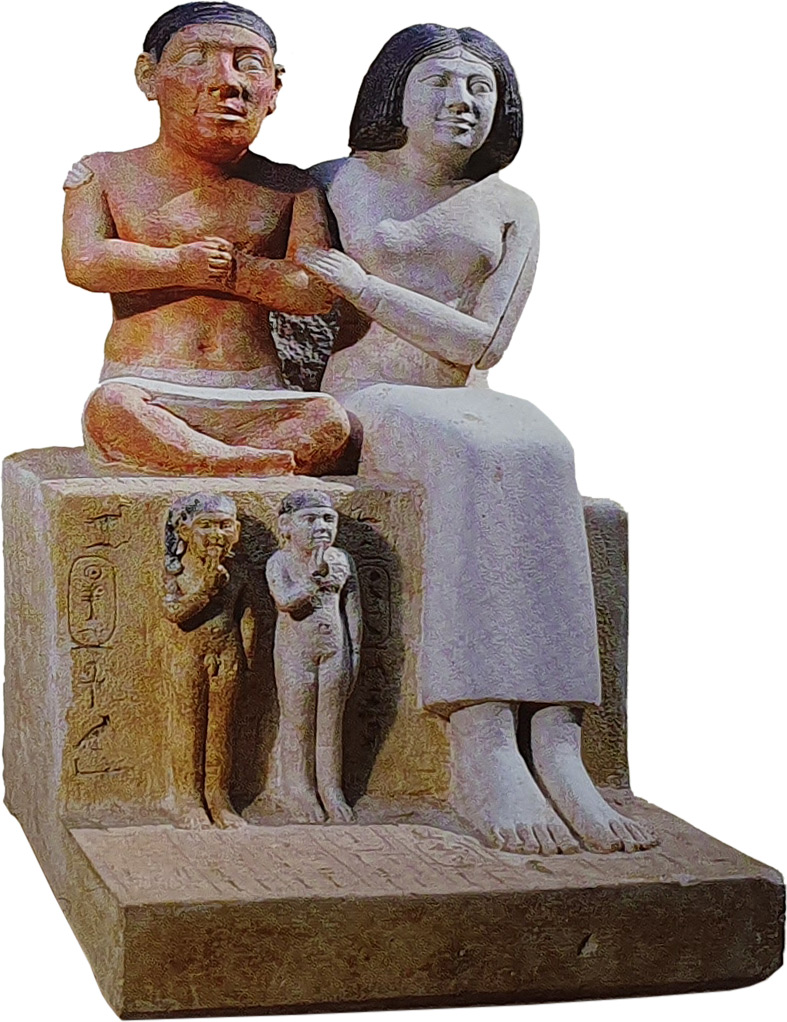Ancient Egyptians worshipped each king as a god, trembling before the divine master they called pharaoh – meaning ‘Great House’. During the 3,000- year-long history of their realm, 32 royal dynasties ruled over them.
Beginnings
Before the first dynasty was founded in about 3100 BC, the country was ruled as two kingdoms. Lower Egypt covered the Nile Delta; Upper Egypt stretched southwards along the narrow, fertile strip of the Nile valley.
The capital of Upper Egypt was Nehken, later Hierakonpolis, the centre of the cult of Horus, the falcon god.

This stone statue is from the Horus temple at Nekhen.

The Narmer Palette shows the king of Upper Egypt subjugating the people of Lower Egypt.
Conquering king
In around 3000 BC, a semi-legendary king of Upper Egypt, called Menes, or Narmer, is said to have conquered Lower Egypt, and united the two kingdoms.
Menes founded the first dynasty in Egypt and laid the foundations for a stable state which placed increasing power in the hands of the ruler, or pharaoh.
A new capital was created at Memphis, at the meeting-point between Upper and Lower Egypt.
The great pyramid-builders
Over the next 400 years, under the rule of four dynasties of pharaohs, Egypt became a strong and prosperous nation. Most of its creative energy was directed towards religion and tomb-building.
The most ambitious project was pyramid-building, an activity that reached its height during the Fourth Dynasty.
The extraordinary pyramids of Giza were built for the great pharaohs Khufu (reigned c.2551-2528 BC), Khafre (c.2520-2494 BC), and Menkaure (c.2490-2472 BC) at about this time in Egypt’s history.

King Menkaure, flanked by two goddesses, wears the symbols of power, including a false beard.
The pyramid builders came from many walks of life. However, they all had one thing in common- they gave their labor to pay off the annual taxes they owed the pharaoh. A permanent workforce lived with their families in villages erected near the pyramid site. Temporary workers, who arrived to work in three- or four-month shifts, lived in camps built nearby.
The royal court
The pharaohs ruled supreme over a society that had a strict hierarchy. They lived in royal residences surrounded by a large retinue of administrators and priests, who were appointed from non-royal families. Like the pharaoh, the queen (who could be his sister) was considered divine. The pharaoh also had other wives. To begin with, it was believed that only pharaohs could expect eternal life; later, courtiers and officials began to build their own tombs. Many did so on the Giza plateau, among them the dwarf Seneb, priest of funerary cults under Khufu. He was buried near Khufu’s Great Pyramid in Giza.

This model from Seneb’s tomb shows the dwarf and his wife.
Below Seneb’s seated figure are representations of his children.